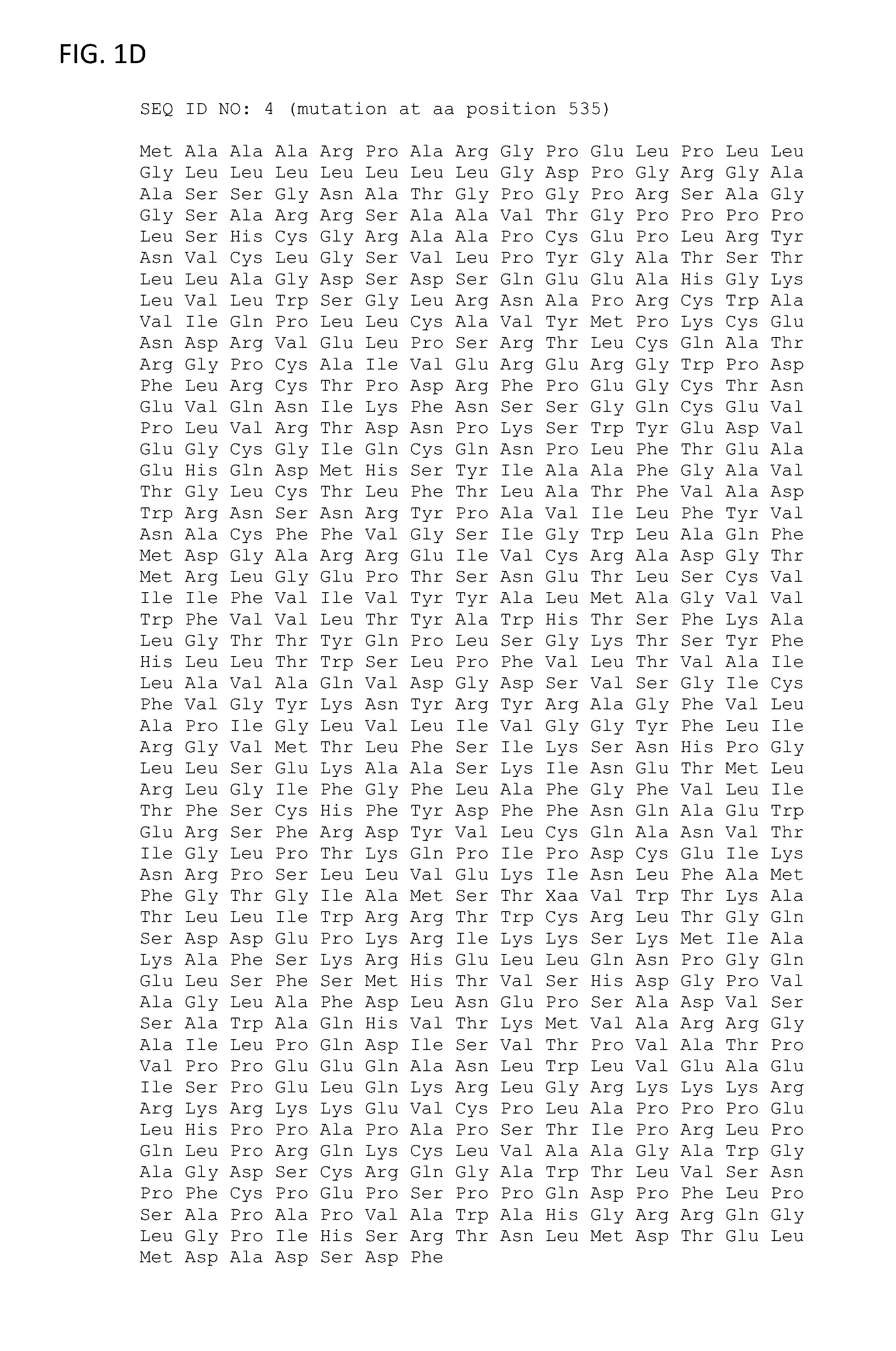Mutant smoothened and methods of using the same
- Summary
- Abstract
- Description
- Claims
- Application Information
AI Technical Summary
Benefits of technology
Problems solved by technology
Method used
Image
Examples
example 1
Genetic Analysis of Vismodegib-Resistant Basal Cell Carcinomas
[0530]Clinical responses to targeted therapies (e.g., cancer therapies) can be short-lived due to the acquisition of genetic alterations that confer drug resistance. Identification of resistance mechanisms will guide novel therapeutic strategies. Inappropriate Hh signaling is linked to several cancers, including basal cell carcinoma (BCC). Loss-of-function mutations in PTCH (˜90%) and activating mutations in SMO (˜10%) are the primary drivers in BCC. Clinical mechanisms of resistance to vismodegib (GDC-0449) were identified using exome, RNA and copy number analysis of relapsed basal cell carcinomas.
[0531]As shown in FIG. 2, vismodegib resistance was associated with elevated hedgehog pathway signaling in patients with vismodegib-resistant BCCs. The results of exome sequencing and copy number analysis* of vismodegib-resistant BCCs are shown below in Table 3.
TABLE 3PossiblePatientOncogenic driverresistance mechanismMGPTCH1.s...
example 2
Genomic Analysis of Vismodegib-Resistant and Untreated BCCs
[0536]To identify mutations associated with vismodegib resistance, whole exome sequencing (WES) was performed of BCCs from Gorlin syndrome (n=5) and sporadic (n=6) patients, and targeted SMO sequencing of a formalin-fixed paraffin-embedded (FFPE) sample from a further Gorlin patient. All patients initially experienced a clinical benefit on vismodegib but subsequently progressed while undergoing treatment.
[0537]Two distinct biopsies from four of the patients were collected such that a total of sixteen biopsies from vismodegib-resistant BCCs were analyzed. Patients were initially diagnosed with metastatic (FIG. 6B) or locally advanced BCC (FIG. 6C) and it was confirmed histologically that the drug-resistant lesions were BCCs (FIG. 6D). For comparison, tumors from untreated Gorlin syndrome (n=16) and sporadic (n=27) BCC patients were subjected to WES. Two distinct biopsies were obtained from five of the Gorlin patients giving 4...
example 3
PTCH1 and SMO Mutations in BCC Initiation
[0539]Consistent with previous reports on BCC genetics (Jayaraman et al., 2014; Reifenberger et al., 2005), all of the relapsed Gorlin (100%) and the majority of sporadic (75%) BCCs displayed mutations in the tumor suppressor PTCH1), which occur throughout the length of the gene and are probably deleterious: seven are truncating, four are likely to affect exon splicing and two are predicted to be deleterious by the Condel algorithm (Gonzalez-Perez and Lopez-Bigas, 2011). The Gorlin patient BCC (PT12) was also likely to have initiated by alterations in PTCH1. The relapsed sporadic tumors without PTCH1 alterations (n=2) harbored the known oncogenic mutation SMO-W535L (Xie et al., 1998). These PTCH1 and SMO variants are likely to be the initiating events in the BCCs that first responded and subsequently displayed vismodegib resistance.
[0540]A similar trend for the frequency of PTCH1 variants was observed in the untreated Gorlin (90%) and sporadi...
PUM
| Property | Measurement | Unit |
|---|---|---|
| Fraction | aaaaa | aaaaa |
Abstract
Description
Claims
Application Information
 Login to View More
Login to View More - R&D
- Intellectual Property
- Life Sciences
- Materials
- Tech Scout
- Unparalleled Data Quality
- Higher Quality Content
- 60% Fewer Hallucinations
Browse by: Latest US Patents, China's latest patents, Technical Efficacy Thesaurus, Application Domain, Technology Topic, Popular Technical Reports.
© 2025 PatSnap. All rights reserved.Legal|Privacy policy|Modern Slavery Act Transparency Statement|Sitemap|About US| Contact US: help@patsnap.com



